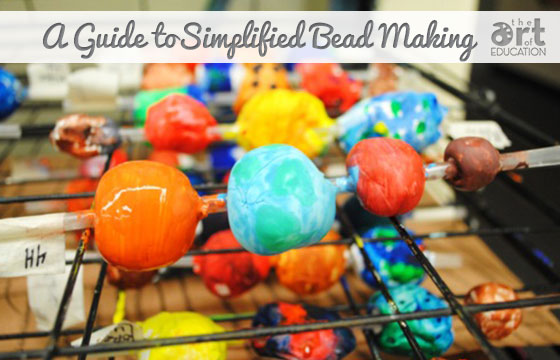Shish-ka-what? That’s right, beads on a stick!
My students love wearing their art and I love teaching jewelry lessons, but for years I struggled with the logistics of beadmaking. How could kids put their names on all of them, paint them without making a royal mess of themselves and my tables, keep the holes from squishing closed, and organize them in a way that was simple for everyone?
The solution, my frazzled friends, is SHISH-KA-BEADS!
It sounds corny, and it is, but it is a magical catch-phrase and technique that sticks deep in kids’ brains. Plus, you know it works, because the idea was borne of my failures. That’s where all of the really good ones start.

Here’s what you do.
First, have your students make a tape flag by wrapping a piece of masking tape on the end of a drinking straw and pressing the ends together. You can do this for your littlest students, it doesn’t take much time, but I always like kids to do as much of the work as possible. This flag is for their name and class code.
Now I have my students roll out their clay medium into beads. This techniques works great for Model Magic or other air dry clays. Push the beads onto the straw. This will warp them a bit, so they’ll have to do a little reshaping. Once they are finished, the beads can be set to dry on any surface they won’t stick too.
Once they’re dry and it is time to paint, students can keep the beads on the straw and use it as a clean handle.

After they are painted, simply rest the straws on the wires of your drying rack. Hands, tables, and surfaces are cleaner, and beads tend to be more successful.

What kind of bead making have you tried with students?
What are other techniques you’ve found to make tough processes easier?
Magazine articles and podcasts are opinions of professional education contributors and do not necessarily represent the position of the Art of Education University (AOEU) or its academic offerings. Contributors use terms in the way they are most often talked about in the scope of their educational experiences.




